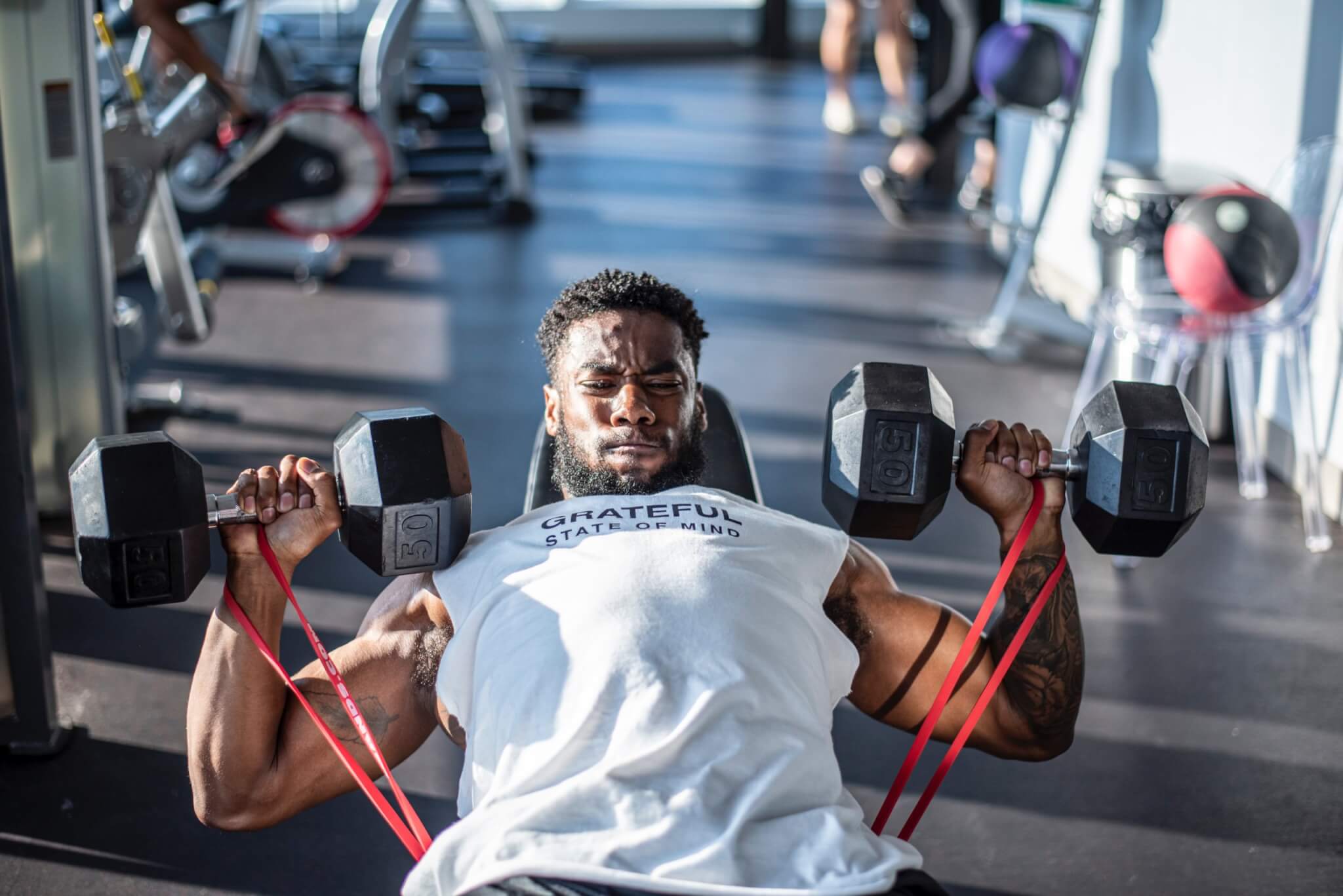Building muscle quickly can feel challenging, but with the right approach, you can see real results in a short amount of time. Focus on a balanced strategy that includes proper workout routines, sufficient nutrition, and recovery techniques to maximize your muscle growth. By understanding the key elements of muscle building, you can optimize your efforts and push toward your fitness goals.
Your workouts should incorporate effective exercises that target multiple muscle groups. This means focusing on compound movements and progressively increasing the weight you lift. At the same time, eating enough protein and calories is essential for supporting muscle repair and growth. With the right plan, you can ensure your body has what it needs to recover and grow stronger.
To get started on this journey, it’s important to create a routine that fits your lifestyle while challenging your muscles. As you read through this article, you’ll discover practical tips and strategies to enhance your muscle-building efforts effectively.
Key Takeaways
- A balanced plan includes effective workouts and proper nutrition.
- Focus on compound exercises for maximum strength gains.
- Recovery strategies are vital for preventing overtraining.
Understanding Muscle Growth
Muscle growth is a complex process that involves biological changes, hormonal influences, and the role of protein. Knowing these factors will help you optimize your workouts and diet for better results.
Biological Basis of Muscle Hypertrophy
Muscle hypertrophy occurs when your muscle fibers increase in size. This happens primarily through two mechanisms: myofibrillar and sarcoplasmic hypertrophy. Myofibrillar hypertrophy focuses on increasing the contractile proteins in your muscles, leading to greater strength. Sarcoplasmic hypertrophy increases the volume of sarcoplasm, the semi-fluid substance in muscle cells.
When you engage in resistance training, you create tiny tears in your muscle fibers. Your body repairs these tears during recovery, resulting in thicker muscle fibers. This process also involves satellite cells, which play a crucial role in muscle repair and growth.
Role of Hormones in Muscle Gains
Hormones significantly affect muscle growth. Two of the most important are testosterone and growth hormone.
Testosterone helps increase muscle mass by promoting protein synthesis. Higher levels can lead to more effective muscle repair and growth.
Growth hormone also plays a vital role. It stimulates tissue growth and helps with recovery after workouts.
Both hormones work together to maximize your muscle-building potential. Factors like sleep and overall health can influence the levels of these hormones in your body.
Importance of Protein Synthesis
Muscle protein synthesis (MPS) is the process where your body builds new proteins to repair and grow muscle tissue. This occurs after you work out, especially when protein is available.
To support MPS, aim for 20 to 40 grams of protein within a few hours after your workout. Sources like chicken, eggs, or protein shakes are effective.
Consistent protein intake throughout the day is also important. This helps maintain a positive protein balance, allowing your body to keep building muscle over time.
Dietary Strategies for Building Muscle Fast
To build muscle quickly, focus on proper calorie intake, protein consumption, and nutrient timing. These strategies will give your body what it needs to grow stronger and bigger.
Caloric Intake for Muscle Gain
To gain muscle, you must eat more calories than your body burns. This is called a calorie surplus. A good rule is to aim for 250 to 500 extra calories each day. This extra energy helps your body repair and build muscle tissue.
Track your daily calorie intake to ensure you meet your goals. Foods high in nutrients, such as avocados, nuts, and whole grains, can help you achieve this surplus. Pay attention to serving sizes and try to eat every 3-4 hours to keep your energy up.
Protein: The Building Block of Muscles
Protein is essential for muscle growth. It provides the necessary amino acids your body uses to build new muscle fibers. Aim for 1.2 to 2.2 grams of protein per kilogram of your body weight daily.
Include high-quality protein sources in your diet like chicken, fish, eggs, dairy, and legumes. Protein supplementation, in the form of shakes or bars, can also help you meet your daily goals, especially after workouts.
Make sure to spread your protein intake throughout the day for better absorption. Having protein-rich foods with every meal helps keep your muscles fueled.
Optimizing Nutrient Timing
Nutrient timing can play a big role in how effectively you build muscle. Focus on eating the right nutrients around your workouts. Consuming 20-40 grams of protein within 30-60 minutes after exercising is crucial for muscle repair.
Combine protein with carbohydrates in your post-workout meal, as carbs help replenish glycogen stores. This can enhance recovery and prepare your muscles for future workouts. Examples include a protein shake with a banana or yogurt with granola.
Planning your meals and snacks around your physical activity can maximize your muscle gains. Keep this strategy in mind for effective results.


Designing an Effective Workout Routine
Creating an effective workout routine is essential for building muscle quickly. Focus on resistance training, training volume, and exercise selection to maximize your results.
Resistance Training: Techniques and Variations
In resistance training, various techniques can enhance muscle growth. Progressive overload is crucial; gradually increase the weight or resistance to challenge your muscles.
You can incorporate a full-body workout or a workout split targeting specific muscle groups each session. For example, consider alternating between upper body and lower body workouts.
Using compound movements, like squats and deadlifts, allows you to engage multiple muscle groups at once. In contrast, isolation exercises focus on a single muscle, such as bicep curls. This variation helps target specific areas while maintaining overall strength.
Understanding Training Volume and Frequency
Training volume is the total amount of work done in a training session. This includes the number of sets and reps. Aim for 3-5 sets per muscle group per week, adjusting depending on your goals.
Training frequency refers to how often you train each muscle group. Training each group 2-3 times a week can promote muscle growth.
Make sure to also consider time under tension. Slower repetitions can increase the challenge and stimulate muscles more effectively. Balance your volume and frequency to ensure adequate recovery while maximizing muscle stress.
Benefits of Compound and Isolation Movements
Both compound and isolation movements have their roles in your training program. Compound movements are efficient and engage multiple skeletal muscles. They build overall strength and allow for heavier lifts.
On the other hand, isolation exercises help refine specific muscles. For example, you can enhance arm strength with tricep extensions.
Incorporating both types of exercises maximizes gains. Use compound exercises to build a strong foundation, then add isolation movements for targeted growth. This balanced approach aids in achieving your muscle-building goals more effectively.
Key Exercises for Maximum Muscle Gains
To build muscle quickly, focus on key exercises that target major muscle groups, choose the right selection, and implement effective techniques. Each of these elements will help you maximize your gains and improve your overall strength.
Targeting Major Muscle Groups
When aiming for muscle gains, it’s crucial to target all major muscle groups. This includes your chest, back, arms, legs, and shoulders. For example:
- Chest: Incorporate exercises like the bench press and push-ups to build pectoral muscles.
- Back: Use barbell rows and pull-ups to strengthen your lats and improve posture.
- Arms: Focus on bicep curls for biceps and triceps pushdowns to develop your triceps.
- Legs: Deadlifts work multiple muscle groups, including hamstrings and glutes.
Targeting these areas ensures balanced muscle development and helps prevent injuries.
Exercise Selection for Optimal Gains
Choose compound exercises that engage multiple muscle groups for maximum strength gains. Here’s a list of effective exercises:
- Squats: Great for legs and glutes.
- Deadlifts: Works the back, hamstrings, and core.
- Bench Press: Targets the chest and triceps.
- Overhead Press: Develops shoulders and upper arms.
Aim for 3 to 4 sets of 8 to 12 reps for each exercise. This rep range stimulates muscle hypertrophy, helping you gain size. Remember to include isolation exercises like bicep curls and calf raises for focused development.
Techniques for Strength and Size
Proper form is essential to maximize muscle contraction during workouts. Focus on the following techniques:
- Concentric Phase: During the lift, like when you push up on a bench press, apply steady control to engage the muscles fully.
- Eccentric Phase: Slowly lower the weight. This part helps in muscle growth by causing micro-tears in the fibers, which leads to stronger muscles.
- Rest and Recovery: Allow your muscles at least 48 hours to recover between workouts. This helps in rebuilding and growing the muscle tissue.
Incorporate these techniques into your training to see noticeable improvements in both strength and size.
Recovery and Avoiding Overtraining
Recovery is essential for building muscle fast. It allows your body to repair muscle fibers, replenish energy, and prepare for future workouts. Proper rest and nutrition help you avoid setbacks like overtraining.
The Crucial Role of Sleep in Muscle Recovery
Sleep is vital for muscle recovery. During deep sleep, your body produces growth hormone, which aids in muscle repair and growth. Aim for 7 to 9 hours of quality sleep each night.
To improve your sleep:
- Establish a routine: Go to bed and wake up at the same time daily.
- Create a sleep-friendly environment: Keep your room dark and cool.
- Limit screen time: Avoid screens 30 to 60 minutes before bed.
Quality sleep helps reduce muscle protein breakdown and promotes lean muscle mass.
Balancing Workout Intensity and Rest
Finding the right balance between workout intensity and rest days is key. Hard workouts break down muscle fibers, but rest is when they rebuild stronger. Listen to your body and adjust your workout volume.
- Plan rest days: Incorporate at least one full rest day per week.
- Mix intensities: Alternate between high-intensity and low-intensity workouts.
- Track progress: Note any signs of fatigue or decreased performance.
This balance helps you bulk effectively without risking fatigue or injury.
Recognizing and Preventing Overtraining
Overtraining can lead to burnout and hinder muscle growth. Watch for symptoms such as:
- Decreased performance
- Excessive fatigue
- Increased muscle soreness
- Irritability or mood swings
To prevent overtraining, consider these strategies:
- Monitor workout volume: Avoid excessive volume and intensity.
- Include recovery techniques: Use methods like hot-cold contrast baths to boost recovery.
- Stay hydrated: Drink enough fluids to support recovery and performance.
Addressing these areas keeps your training productive and helps maintain a healthy hormonal response in your body.





